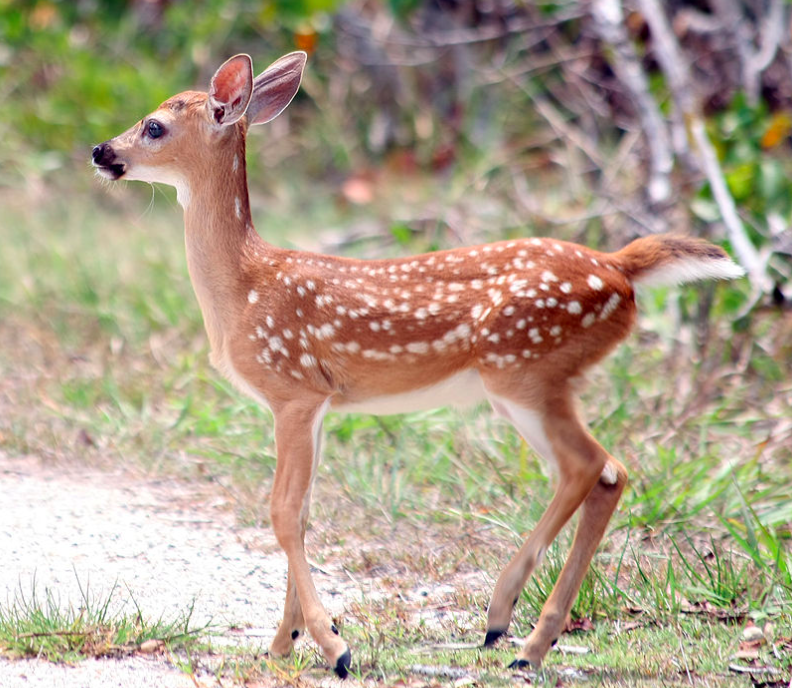Introduction: Odocoileus Virginianus Texanus
Odocoileus Virginianus or white-tailed deer is an artiodactyl mammal of medium size located in many countries: the United States, Canada, central America and South America as far as Per or Bolivia. (14) There have been 38 subspecies identified. One of which is the Odocoileus Virginianus texanus which are white-tail deers located in Texas, Oklahoma, southeast Colorado and New Mexico. (15) For more information, you can visit this Viquipèdia page.
1. CLASIFICATION
| Kingdom | Animalia |
|---|---|
| Phylum | Chordata |
| Class | Mammalia |
| Order | Artiodactyla |
| Family | Cervidae |
| Subfamily | Capreolinae |
| Genus | Odocoileus |
| Species | O. virginianus |
2. DESCRIPTION
White-tailed deer has a lenght of 1.5 to 2 metres, and a height of aproximetely 80 to 100 cm. They present sexual dimorfism. Male white-tailed deers weight between 60 and 160 kg, while female deers weight between 40 and 105 kg. (14) The coloration of their fur varies between seasons, geographical regions and species. Generally, fur's coloration tends to a red or yellowish coloration during summer and spring, while it turns brown and grey during winter and autumn. Moreover, deers inhabiting tropical and hot areas also tend to have a red fur's coloration and those living in colder areas tend to a brown and grey coloration. Finally, white-tailed deers have some white regions in their fur such as around their nose and eyes, inside the ears, the end of the tail, etc. (15)
Moreover, males have branched antlers (between 8 and 64 cm) that grow during April or May and fall between January and March, after mating. (15) At birth, fawns weight between 1.5 to 2.5 kg and their fur is characterized by several small white rounded stains that will last until the winter comes. (14)
Finally, the white tail deer is endowed with very accurate senses of sight and hear. Although its survival and danger detection depends mainly on its highly developed sense of smell. (15)
3. ECOLOGY
White-tail deers live in farmlands, weed areas, cactus deserts and thorny bushes area found in, for example, Texas and Mexico. They look for areas with dense and high bushes that will allow them to hide from their predators. Their main predators are human, wolves, mountain lions, bears and jaguar. (14, 15) White-tailed deer is an herbivore mammal which eats a large variety of food found in vegetation such as leaves, buds and mushrooms. (14, 15, 16)
4. REPRODUCTION
White-tailed deers mate in their second year. However, some females can mate even at 7 months from birth. They are poligamic mammals which can stay with a single doe for some days and maybe weeks, until the female reaches sexual fertility and receptivity. (15)
They mate once a year between october and decembre. Fawns are born in spring after a gestation of 6.5 months. the average offspring are 2 or 3 fawns. Male young deers stay with their progenitor for a year fter birth. Nevertheless, female deers wait for two years after birth until they leave their female progenitor. Fawns are breastfeeding between 8 to 10 months. Female deers are very protective with their fawns at birth. (17, 18) White-tailed deer's lifetime is between two and three years, and only a few of them live more than 10 years. (14)

5. BEHAVIOUR
White tailed deer is known to be a shy and nervous deer. It is a very agile animal that can run almost 50km/h and are also very good swimmers. (15) When they feel in danger, they start running with their tail up until they find a safe place to hide. This way they can show the white part of their tail to deers around them as a warning sign. (14, 15)
Generally, white-tailed deers usually form groups from 2 to 15 individuals that are reduced in summer to 2-4 individuals' group. When September comes, male deers leave their groups in order to find a female to mate and reproduce. Sometimes, two or more male deers have to fight for the same female. They fight using their antlers. (15)
6. SUBESPECIES





